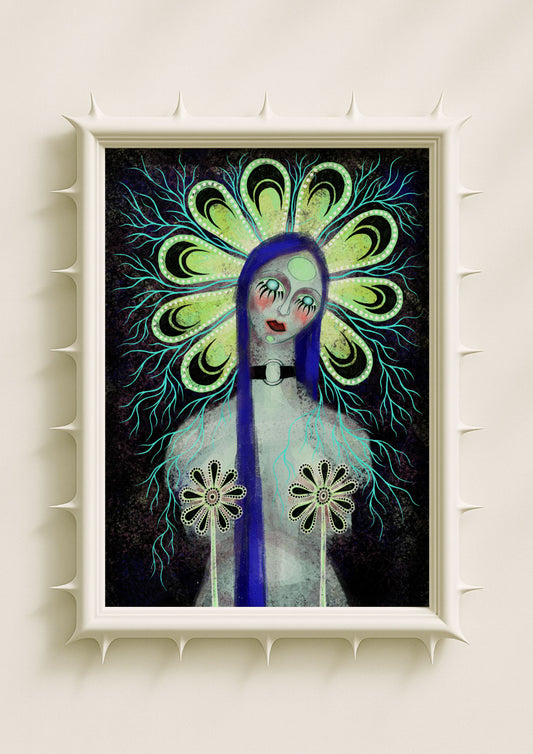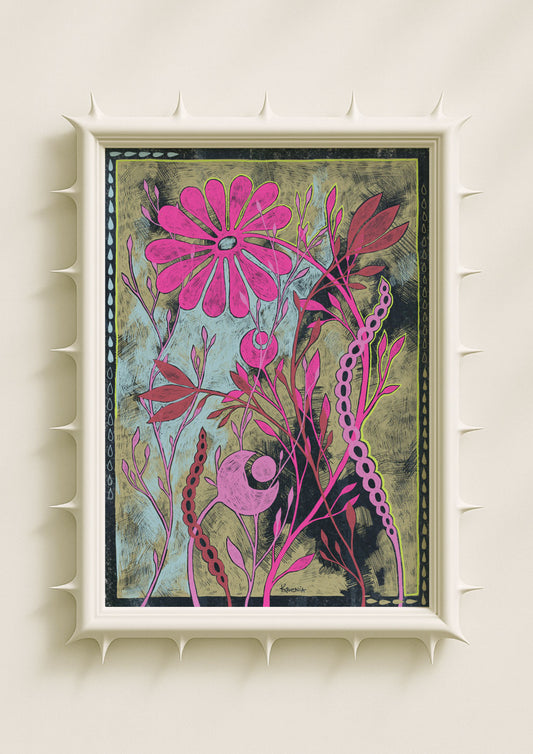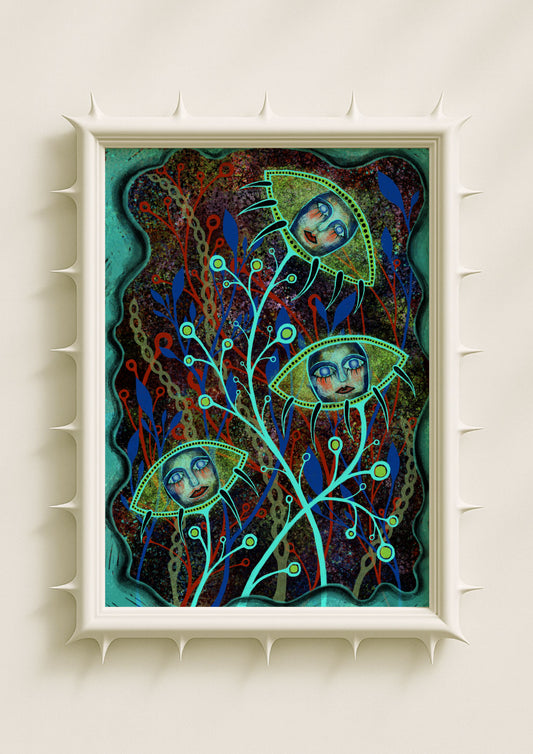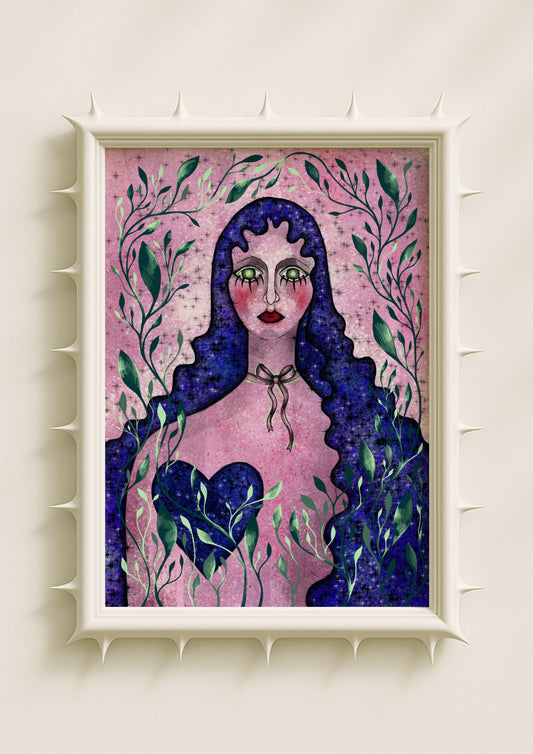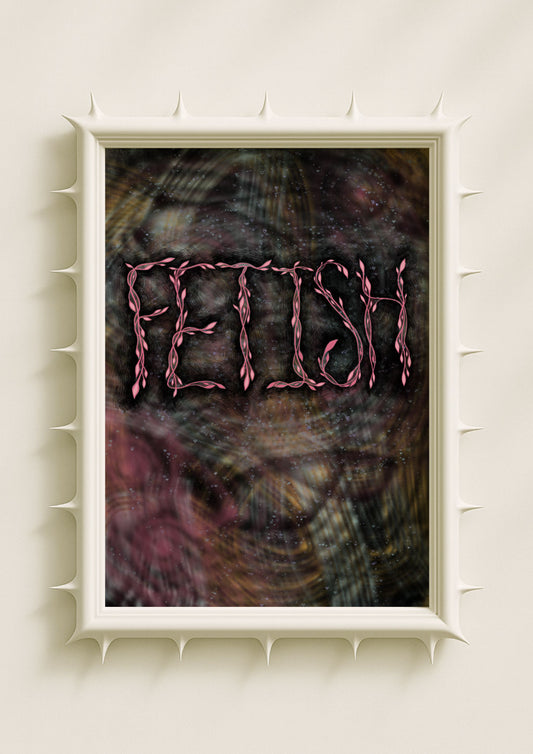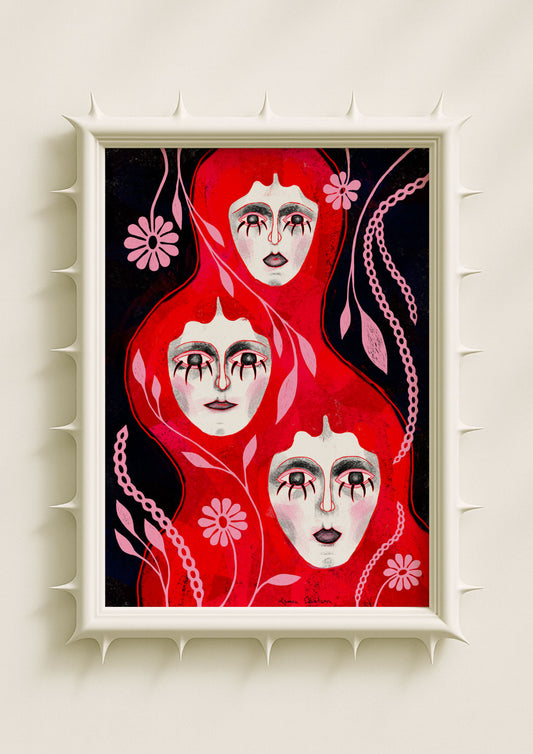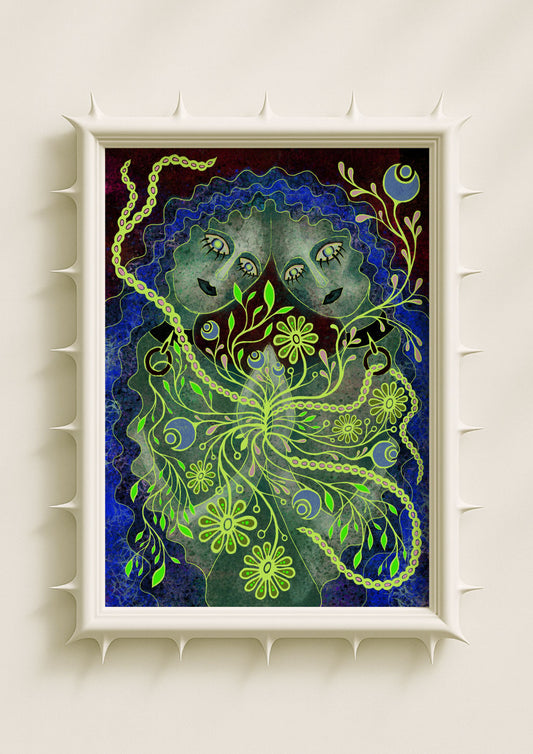We live surrounded by fragments — scrolling through images, headlines, and flashes of colour that appear and vanish before we can fully process them. Modern art posters are born from this rhythm. They don’t simply imitate digital culture; they translate its chaos into form, its overload into design. The fragmented mind of the digital age has found its reflection in the aesthetics of collage, layering, and distortion that define much of today’s visual language.
For me, this fragmentation is not something to resist but to understand. I often work with contrasts that feel abrupt — clean lines next to painterly strokes, digital precision beside emotional blur. These oppositions mirror how the modern eye experiences the world: overstimulated, selective, curious, and sometimes exhausted. Modern art posters don’t aim to tidy that complexity. They capture it.
Screen Culture as Visual Conditioning
Every screen we look at reshapes how we see. Scrolling, swiping, pausing — these gestures train the gaze to move differently. We no longer read an image linearly; we jump, compare, filter. In art, this becomes a kind of visual muscle memory. When I design a modern poster, I think about how the eye will wander: it doesn’t settle, it navigates.

This screen-conditioned vision has deeply influenced contemporary composition. The centre of a poster is no longer the only focal point. Meaning can sit on the periphery, half-hidden behind texture or type. This reflects the scattered attention of digital life — where everything competes for space but nothing truly dominates.
Yet within that fragmentation lies a strange harmony. The rhythm of overlapping images and fleeting glances becomes almost musical. A good modern art poster captures that tempo — not calm, but balanced in its chaos.
Collage Logic and the Aesthetic of Juxtaposition
Collage once belonged to the avant-garde. Now, it belongs to everyone scrolling a feed. The cut-and-paste logic of our digital environment — from memes to advertisements — has made collage an unconscious language. Modern art posters embrace that. They merge photography with typography, realism with abstraction, nostalgia with futurism.
In my own work, I love this act of collision. I bring together fragments that shouldn’t coexist — a vintage floral shape beside a metallic glitch, a soft portrait layered under bold digital texture. These combinations speak to the way memory and media overlap in modern life. Nothing is pure, everything is mixed, yet meaning still emerges through contrast.
Collage, in this sense, is not only a visual technique but a way of thinking — assembling identity, history, and imagination from fragments of influence. It mirrors the way we construct ourselves in the digital age, piecing together who we are through things we see, share, and remember.
Visual Overload as Emotional Expression
The modern eye is used to excess. We see hundreds of images every day. Instead of quiet minimalism, modern art posters often respond with intensity — layered imagery, kinetic colour, distorted typography. Overload becomes emotion. It reflects the restlessness of modern thought, the saturation of information, and the search for meaning amid noise.

But overload doesn’t always mean chaos. When handled with care, it becomes beauty through density. I like to think of visual complexity as a metaphor for sensitivity — the kind of mind that feels too much, absorbs too much, but transforms that overwhelm into expression. That’s what I find moving about maximalist and modern poster design: it holds tension and release in the same frame.
The Digital Texture of Reality
The digital world has changed not only how we see, but how we feel images. Pixelation, glitch, and blur have become textures of emotion. In earlier eras, cracks in paint revealed time. Today, digital noise reveals presence — the trace of our mediated world.
I often incorporate digital irregularities intentionally: small distortions, gradients that shift like light on a screen, colour transitions that feel slightly unstable. These details mimic the instability of digital life, but they also humanise it. They remind us that behind every screen, there is a body — watching, reacting, feeling.
The most striking modern art posters acknowledge this duality. They blend technology and humanity, precision and imperfection. They turn digital aesthetics into emotional storytelling.
The Fragmented Mind as a Modern Muse
The fragmented mind isn’t broken — it’s adaptive. It learns to see patterns in overload, to find poetry in fragments. Modern art posters, in many ways, celebrate that evolution. They speak to people who recognise themselves in dissonance, who find comfort in visual noise, who feel at home in complexity.

In my own creative process, I think of fragmentation not as disconnection but as accumulation — a gathering of visual moments that form something larger than logic. Each layer becomes a thought, each texture a memory, each colour a pulse. The result may feel scattered, but emotionally, it’s whole.
In the digital age, beauty often hides inside the overload. And perhaps modern art posters, with their collage logic and visual rhythm, are reminders that even in fragmentation, meaning persists — just waiting to be assembled.
